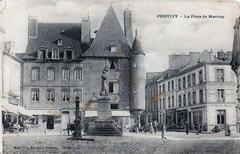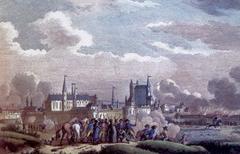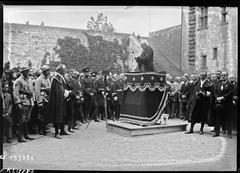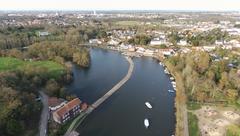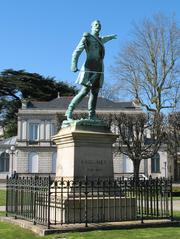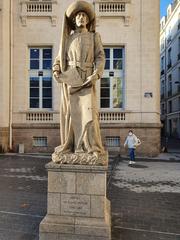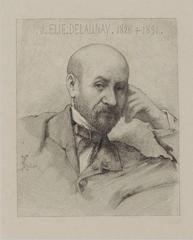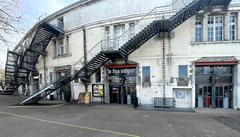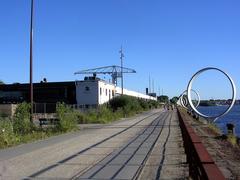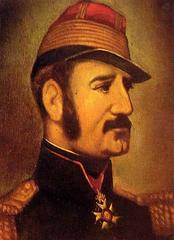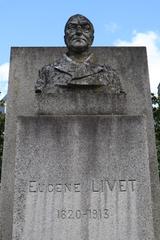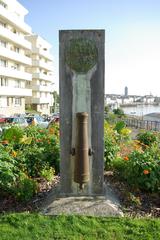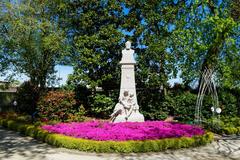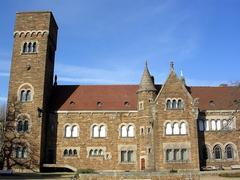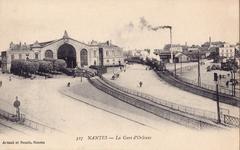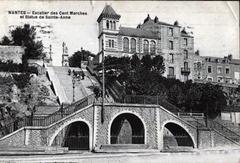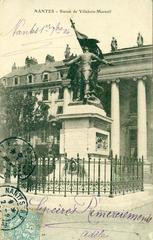Visiting the Monument Aux Morts De La Première Guerre Mondiale in Nantes, France: Tickets, Hours, and Tips
Date: 14/06/2025
Introduction
In the heart of Nantes, France, the Monument Aux Morts De La Première Guerre Mondiale stands as a solemn and moving tribute to the 5,827 local men who sacrificed their lives during World War I. More than a historic landmark, it embodies the collective memory and resilience of the Nantes community, reflecting both the grief and pride that shaped the city in the aftermath of the Great War. The monument’s creation was part of a nationwide movement following the 1918 Armistice, when communities across France built memorials to honor the war dead and foster a sense of shared remembrance (Académie de Nantes, TracesOfWar, Wikipedia).
Designed with symbolic richness, the monument features classical allegorical figures—such as Marianne, mourning mothers, and the “poilu” soldier—representing liberty, grief, and sacrifice. National symbols like the Croix de Guerre and the Gallic rooster are also present, and the names of the fallen are inscribed to personalize the collective loss (TracesOfWar). The site continues to serve as a focal point for annual commemorations, educational visits, and public reflection on themes of memory, identity, and peace.
Visitors can access the monument year-round, free of charge. Its central location, near key attractions such as the Château des ducs de Bretagne and the Musée d’Arts de Nantes, makes it easily accessible and a must-see for anyone interested in French history and heritage (Nantes Tourism, Total Military Insight).
Table of Contents
- Introduction
- Historical Genesis and National Context
- Design, Symbolism, and Construction
- Historical and Cultural Significance
- Visiting Information
- Societal Impact and Ongoing Relevance
- Preservation and Future Perspectives
- Controversies and Debates
- Comparative International Perspectives
- Frequently Asked Questions (FAQ)
- Conclusion
- References and Further Reading
Historical Genesis and National Context
After the Armistice of 1918, France faced the immense loss of nearly 1.4 million soldiers. This collective trauma led to a nationwide movement to erect war memorials in almost every French town and city (Académie de Nantes, Wikipedia). The Monument Aux Morts in Nantes is part of this broader effort, emphasizing themes of sacrifice, resilience, and memory. Unlike monuments celebrating victory, these memorials—built throughout the 1920s and 1930s—are places for solemn reflection and communal mourning (Total Military Insight).
Local civic leaders, veterans’ associations, and bereaved families in Nantes played central roles in the monument’s creation, uniting the community in the process. The Souvenir Français organization, dedicated to preserving the memory of war dead, was also influential in this movement (Wikipedia).
Design, Symbolism, and Construction
Artistic Vision and Allegorical Figures
The monument’s design reflects the conservative classicism and Christian symbolism prevalent in French memorials of the era (Wikipedia). Allegorical figures—Victory, Peace, and mourning mothers—are prominent, as are the Gallic rooster and Croix de Guerre, all reinforcing themes of sacrifice and national unity (TracesOfWar). The names of the fallen are painstakingly inscribed, making the loss both collective and personal.
Construction and Community Involvement
Constructed from durable materials such as limestone and bronze, the monument was a major civic undertaking. Local citizens contributed through fundraising, while public competitions or commissions determined the final design. The unveiling was marked by a solemn ceremony, quickly establishing the site as a focal point for annual Armistice Day commemorations.
Historical and Cultural Significance
The Monument Aux Morts De La Première Guerre Mondiale marks a significant shift in French commemorative tradition, recognizing not only military leaders but also ordinary soldiers and civilians (Wikipedia). It remains central to Nantes’ cultural and civic identity, serving as an anchor for remembrance, education, and reflection.
In the later 20th century, renewed interest led to restoration efforts and expanded commemorative functions, including memorializing victims of subsequent conflicts.
Visiting Information
Hours and Admission
- Hours: The monument is outdoors and accessible every day during daylight hours (typically 8:00 AM to 8:00 PM).
- Admission: Free; no tickets or reservations required.
Accessibility
The site is fully wheelchair accessible, with paved pathways and nearby public transportation options. Parking for visitors with disabilities is also available.
Guided Tours and Events
Guided tours offered by local tourism offices and historical societies often include the monument, providing deeper context and historical insights. The most significant annual event is Armistice Day (November 11), featuring wreath-laying ceremonies and moments of silence.
Photography and Visitor Etiquette
Photography is permitted and encouraged, especially during the softer light of early morning or late afternoon. Visitors should maintain a respectful demeanor, especially during commemorative events or personal moments of reflection.
Location and Nearby Attractions
Centrally located near cours Saint-André and square du Maquis-de-Saffré, the monument is close to:
- Château des ducs de Bretagne: Medieval castle with a museum on Nantes’ history.
- Jardin des Plantes: A renowned botanical garden ideal for a contemplative visit.
- Nantes Cathedral: An architectural landmark reflecting the city’s rich past.
- Musée d’Arts de Nantes: Art museum with collections spanning centuries (ArchDaily).
Societal Impact and Ongoing Relevance
The monument remains a living site of memory: schools use it as a place for teaching about history and peace, while annual ceremonies foster community cohesion (Total Military Insight). Its presence in the urban landscape reminds residents and visitors alike of the cost of war and the enduring value of peace.
Preservation and Future Perspectives
Regular maintenance ensures the monument’s preservation against weathering and pollution. Local authorities, often in partnership with heritage organizations, oversee these efforts to maintain its dignity and accessibility for future generations.
Controversies and Debates
While widely respected, the monument reflects the complex debates about memory and identity in postwar France. Its design balances secular and religious imagery and has, at times, been the focus of political or social protest. Notably, the inclusion of the bronze statue “La Délivrance”—a nude female figure symbolizing victory—sparked controversy over its symbolic nudity, leading to its removal and later reinstatement in 2018. The monument’s commemorative scope has also been critiqued for sometimes overlooking colonial soldiers and foreign volunteers.
Comparative International Perspectives
French war memorials, including Nantes’, are distinct for their focus on the ordinary soldier and egalitarian commemoration, contrasting with British, German, or Russian traditions. The Nantes monument exemplifies republican values through its secular design and the alphabetical listing of names without military rank.
Frequently Asked Questions (FAQ)
Q: What are the monument’s visiting hours?
A: The monument is open daily during daylight hours, generally from 8:00 AM to 8:00 PM.
Q: Is there an admission fee?
A: No, visiting the monument is free of charge.
Q: Is the site accessible to people with disabilities?
A: Yes, it is fully wheelchair accessible.
Q: Are guided tours available?
A: Yes, local tourist offices and historical societies offer guided tours that include the monument.
Q: When is the best time to visit?
A: Early morning or late afternoon offer the best lighting and a quieter atmosphere. Armistice Day ceremonies (November 11) provide a particularly meaningful experience.
Q: What are some nearby attractions?
A: The Château des ducs de Bretagne, Nantes Cathedral, Jardin des Plantes, and Musée d’Arts de Nantes are all within walking distance.
Conclusion
The Monument Aux Morts De La Première Guerre Mondiale in Nantes stands not only as a dignified memorial to the city’s fallen but also as a living symbol of sacrifice, resilience, and the ongoing importance of collective memory. Its accessible, central location, and integration into the city’s cultural life make it a key destination for both residents and visitors. Whether you are a history enthusiast, a cultural traveler, or a local resident, the monument offers a powerful connection to France’s past and a space for reflection.
To enhance your visit, download the Audiala app for guided tours and updates on upcoming events. Explore Nantes’ rich heritage and join in commemorating this poignant chapter of French history.
References and Further Reading
- Académie de Nantes
- TracesOfWar
- Wikipedia: World War I memorials
- Total Military Insight: War Memorials and Collective Memory
- Total Military Insight: War Memorials and the Impact of War
- ArchDaily: An Architectural Guide to Nantes
- Official Nantes Tourism Website
